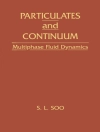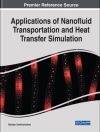Metals and alloys rely for their application at high temperature on the formation and retention of oxide scales, which act as a barrier between the metallic substrate and the reactive species in the environment such as 0, S, N, C, Cl, etc. This protection concept requires that the oxide grows slowly, develops a dense, uniform layer, is well adherent, has sufficient ductility to accom- modate plastic deformation of the substrate and is resistant to thermal cycling. For many years it has been known that small concentrations of certain "active elements" such as Y and the rare earths, as well as carbon and sulphur, can exercise a significant influence upon the oxidation! corrosion behaviour of high temperature metals and alloys. An increasing number of experimental studies on this topic have been published recently. However no generally accepted understanding with regard to the detailed mechanisms and the way in which alloy composition and structure, temperature and environmental conditions, etc., are interacting has yet been achieved, although many – often controversial – theories and ideas have been presented. It therefore seemed to be an appropriate time to bring together a group of experts to review and evaluate the current state-of-the-art and to discuss various aspects of this important topic.
E. Lang
Role of Active Elements in the Oxidation Behaviour of High Temperature Metals and Alloys [PDF ebook]
Role of Active Elements in the Oxidation Behaviour of High Temperature Metals and Alloys [PDF ebook]
Cumpărați această carte electronică și primiți încă 1 GRATUIT!
Limba Engleză ● Format PDF ● ISBN 9789400911475 ● Editor E. Lang ● Editura Springer Netherlands ● Publicat 2012 ● Descărcabil 3 ori ● Valută EUR ● ID 4675011 ● Protecție împotriva copiilor Adobe DRM
Necesită un cititor de ebook capabil de DRM












